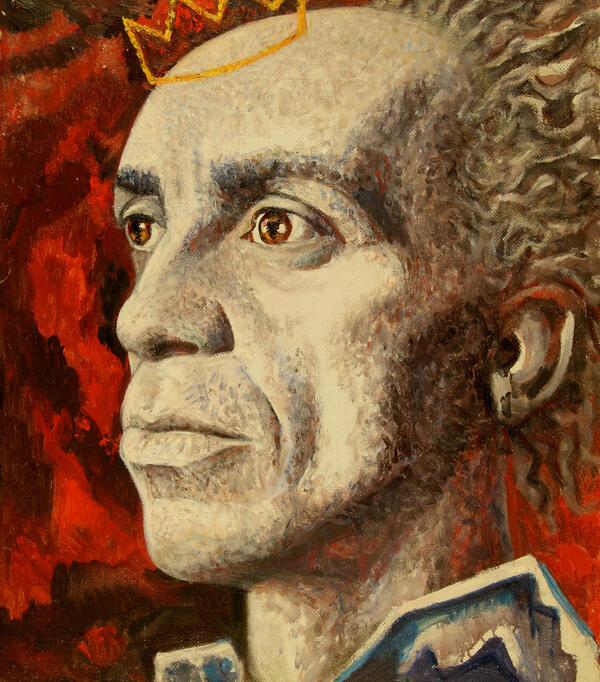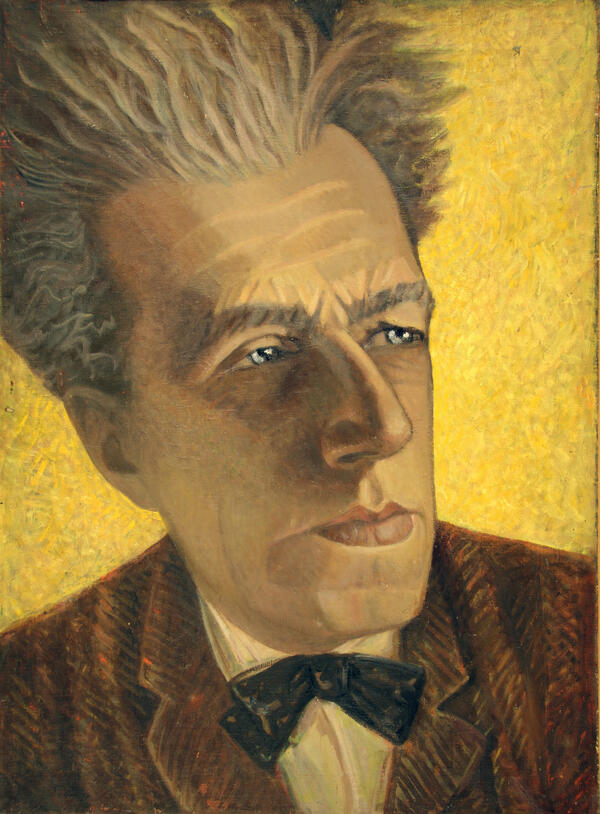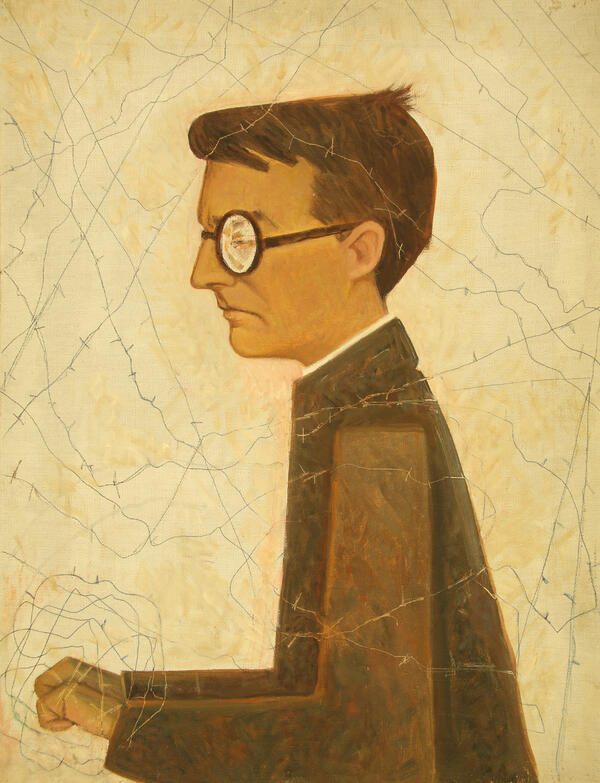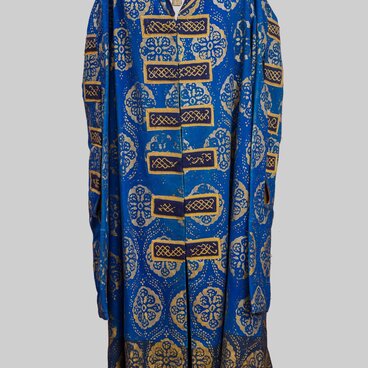The Saint Petersburg Museum of Theater and Music houses three portraits by the artist Alisa Ivanovna Poret (1902–1984). The paintings depict the director Vsevolod Meyerhold, the actor Solomon Mikhoels, and the composer Dmitry Shostakovich. Those men were celebrated for their outstanding contributions to Russian art and also shared similar life circumstances: in the 20th century, all three of them were persecuted and harassed. Two of them met a tragic end: Meyerhold was executed by the firing squad, and Mikhoels died in a fabricated car accident.
Alisa Poret was creating this series of works throughout her life. She used the images to reflect upon the tragic Russian history. Her analysis was remarkably accurate, allowing the viewers not only to see what the life of the portrayed used to be like but also have a glimpse into the future.
For example, Meyerhold’s portrait was painted in 1936, five years before the tragic events. The year 1965, when Shostakovich was depicted, left the composer unscathed. However, the portrait already shows barbed wire surrounding him on all sides, and his hands are literary tied when it comes to music.
The portrait of Solomon Mikhoels was painted in 1976. The actor is depicted as King Lear — one of his best roles. Shakespeare’s story of a king who lost his kingdom closely resembles that of the Moscow State Jewish Theater which lost its leader.
This series of portraits reflects the life of those three men and Alisa Poret herself. Her teachers Kuzma Petrov-Vodkin and Pavel Filonov taught her not only how to paint, but also how important it was to form her own opinion, which ultimately led to these portraits and her other artworks.
Alisa Poret’s painting skills and moral integrity placed her at the center of the 1920s –1930s Leningrad cultural scene. She was friends with the OBERIU group — what the poets of the Association for Real Art used to call themselves. The famous OBERIU representative Daniil Kharms dedicated poems to Alisa Poret.
Poret was also acquainted with the playwright Evgeny Schwartz and the writer Mikhail Zoshchenko. She turned her house into something like a saloon that gathered the best Leningraders to discuss art and life. The artist captured some of the guests in her series of portraits titled “The Tragic Fates of Russia.”
Alisa Poret was creating this series of works throughout her life. She used the images to reflect upon the tragic Russian history. Her analysis was remarkably accurate, allowing the viewers not only to see what the life of the portrayed used to be like but also have a glimpse into the future.
For example, Meyerhold’s portrait was painted in 1936, five years before the tragic events. The year 1965, when Shostakovich was depicted, left the composer unscathed. However, the portrait already shows barbed wire surrounding him on all sides, and his hands are literary tied when it comes to music.
The portrait of Solomon Mikhoels was painted in 1976. The actor is depicted as King Lear — one of his best roles. Shakespeare’s story of a king who lost his kingdom closely resembles that of the Moscow State Jewish Theater which lost its leader.
This series of portraits reflects the life of those three men and Alisa Poret herself. Her teachers Kuzma Petrov-Vodkin and Pavel Filonov taught her not only how to paint, but also how important it was to form her own opinion, which ultimately led to these portraits and her other artworks.
Alisa Poret’s painting skills and moral integrity placed her at the center of the 1920s –1930s Leningrad cultural scene. She was friends with the OBERIU group — what the poets of the Association for Real Art used to call themselves. The famous OBERIU representative Daniil Kharms dedicated poems to Alisa Poret.
Poret was also acquainted with the playwright Evgeny Schwartz and the writer Mikhail Zoshchenko. She turned her house into something like a saloon that gathered the best Leningraders to discuss art and life. The artist captured some of the guests in her series of portraits titled “The Tragic Fates of Russia.”







